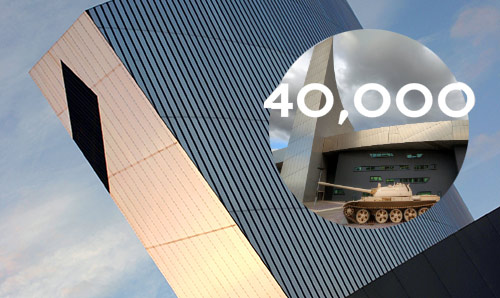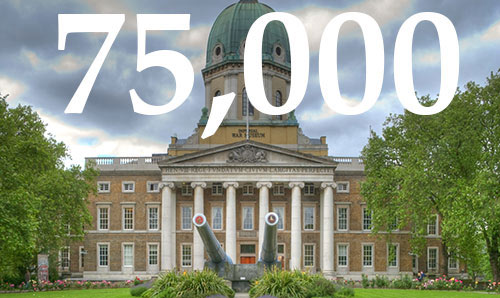Truce? Imperial War Museum challenges visitors on the complexities of peace-making
Our work has altered what people think about truce and peace. We contributed significantly to interactive displays of controversial and complex topics which are now part of the Imperial War Museum North’s permanent main display.
Audio-visual displays at the Imperial War Museum in London and Manchester challenge over a million annual visitors to examine whether truce means peace.

In 2009 the Imperial War Museum North (IWMN) invited Dr Tim Jacoby to co-curate two audio-visual displays which would make up the core of the museum’s ‘Build the Truce’ (BTT) project.
Drawing on his research findings Dr Jacoby worked with the Project Manager, Catherine Roberts, to guide the initiative towards a greater emphasis upon the ethical and political challenges of disarmament, demobilisation, re-integration and peace-building. The display ran in the Imperial War Museum London (IWML) and IWMN during the summer 2012. The project also created a 'Big Picture Show' for IWMN.
IWML achievements
IWML achievements include:
- Mounted in the prestigious B11 main gallery
- Awarded the Inspire kitemark as part of the Olympic Truce Programme, featuring prominently on its web-feed
- Around 75,000 people visited the project during the Olympics
- Covered by national press
- 64% of viewers surveyed said that the film had change their perception of truces; 56% said that BTT had changed their view of IWM itself
- Accompanied by high-profile events such as a 3000 mile ‘Walk for Truce’, development of British Council-backed classroom activities for teenagers, discussion sessions and a workshops
IWMN achievements
IWMN achievements include:
- Since July 2012 the BTT show has a prime slot at 2pm daily, bank holidays and weekends
- An estimated 69% of around 350,000 visitors annually to IWMN see at least one BPS
- Around 40,000 people visited the BTT exhibition during its initial 3 month period
- School resources to UK schools and colleges, Canadian museums and Italian schools
Jacoby recently joined the IWMN ‘academic Network’ to advise the museum on overall strategy.
Our research

Dr Jacoby interviewed doctors, academics, aid workers and former combatants from war-affected areas on their views and experience of truce and peace. He studied the intermittent truces in Turkey, Bosnia and Palestine and the geo-political implications of organising international intervention and the causes of violent conflict.
Key findings
- Ending violence does not lead to justice and human security until causes of conflict are understood and addressed
- International efforts to build truces are often founded on donor requirements, foreign policy imperatives and victors, rather than local need
- Demobilisation and disarmament are not simple processes, often leading to challenges in housing provision and the labour market
- Violent crime may increase and rehabilitation stall because those who take control in areas of conflict have little moral or administrative authority
